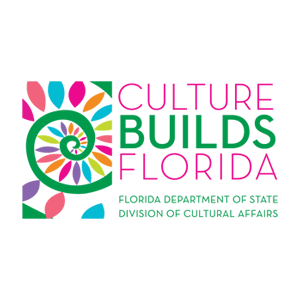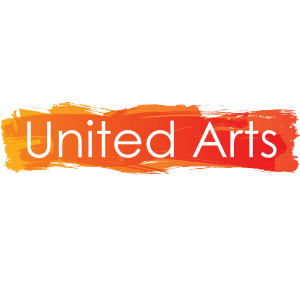Purposeful Architectural Design Sets Tone for Orlando’s New Holocaust Museum for Hope & Humanity
The Orlando Holocaust Center is a 43,000 square foot museum—designed to symbolize a beacon for humanity when illuminated—is the first built around the stories of survivors and the first museum-wide partnership with the USC Shoah Foundation
ORLANDO, Fla. (April 13, 2022) – The Holocaust Memorial Resource and Education Center of Florida (HMREC) unveiled today architectural renderings for the new Holocaust Museum for Hope & Humanity in downtown Orlando, which will be the world’s first Holocaust museum designed around survivor and witness testimonies. Housed in a landmark lakefront structure, the museum will serve as a distinctive and meaningful destination for the region—a global tourist hub which saw 75 million visitors in 2019—and a bridge to local students and residents of Central Florida.
USC Shoah Foundation—The Institute for Visual History and Education (USC Shoah Foundation), established by Steven Spielberg in 1994 and a world leader in testimony-based research, education, and interactive experiences, serves as a content and creative partner in the development of the new museum. The Holocaust Museum for Hope & Humanity marks the first time USC Shoah Foundation has teamed with a Holocaust Museum to design and implement a ground-up and permanent museum-wide exhibition.
This museum is not a history lesson in artifacts, timelines, and numbers. Its strength will come from the manner in which Holocaust history is revealed through the survivors who tell of their experiences. The common elements of humanity revealed will serve as a reminder of the vital importance of practicing the values of respect and cooperation every day. A reminder that each of us makes choices that impact other human beings and the world around us.
The new 43,000-square-foot museum, which has an estimated construction budget of $45 million, is located on the site of the former Orlando Chamber of Commerce building at 75 South Ivanhoe Boulevard. Internationally renowned and award-winning architectural firm Beyer Blinder Belle Architects and Planners (BBB) is overseeing the building design and will collaborate with museum experts Ralph Appelbaum Associates (RAA), Dr. Stephen D. Smith of Memory Workers, and Carolynne Harris Consulting on the interior design and overall guest experience, joining forces to create and imagine a first-of-its-kind museum.
The centerpiece of the museum will be luminous at night symbolizing a beacon for humanity. Encompassing it is a dramatic ramp bathed in natural light that wraps around a cylindrical auditorium. The ramp will connect and create a continuation of exhibition space across two levels, with the largest single exhibit area being more than 12,000 square-feet providing a unique venue. The open end includes a large, glazed aperture—a window of hope.
“This museum will serve as a literal beacon of light for all who visit—shining a spotlight on issues that can divide us so we can seek ways to create a world free of all forms of hatred, bigotry, and prejudice,” said Monte Starr, president of the HMREC Board of Directors.
The Holocaust Museum for Hope & Humanity represents a complete re-imagining of its site from the ground up. Images of the new museum are available at www.holocaustedu.org/new-museum/
“The architecture of the new museum embodies the imperative of survivors, including my mother, Tess Wise, founder of the Holocaust Center, to learn from the Holocaust in order to prevent such an event from ever happening to anyone again. It’s a memorial to those who perished in the form of the beacon to the world that can create hope for a better future… Preserving the past to protect the future.” said Ellen Wise Lang, past president of the HMREC Board of Directors.
The City of Orlando has agreed to lease the land on which the Holocaust Museum for Hope & Humanity is located for $1 per year for 99 years.
“This new space will be more than just a destination; it will be a perfect fit for our community as Orlando continues to send a powerful message to the world that we will always honor history and ignite hope,” said Orlando Mayor Buddy Dyer.
In addition, Orange County has pledged $10 million in tourist development tax grants toward the construction of the Holocaust Museum for Hope & Humanity.
“We are proud that our ten-million-dollar commitment will help ensure the Holocaust Museum for Hope & Humanity’s bright future and its global impact,” said Orange County Mayor Jerry L. Demings.
The new museum will include innovative exhibits such as Dimensions in Testimony, pioneered by USC Shoah Foundation, which enables visitors to ask questions to specially-recorded interactive testimonies of Holocaust survivors and hear real-time responses in lifelike conversation.
“Storytelling is one of the oldest educational tools; it is a universal language. Building a museum with testimony integrated into the fiber of its being, with connection and interactivity woven in, will revolutionize museum experience and ensure lasting relevance of the stories of the Holocaust for generations of visitors,” said Kori Street, Finci-Viterbi Interim Executive Director of USC Shoah Foundation.
BBB is the design architect for the new museum, building on its portfolio of culturally significant work around the world.
“The window of hope is oriented eastward and opens to the remembrance fountain, a contemplative water feature reflecting on six million lives. The building design reflects the museum’s solemn responsibility to share and preserve the stories of the survivors and uses architectural form, space, and volume in concert with the collection to educate, engender empathy, and inspire. The museum will be a transformative experience for visitors of all ages and a welcoming beacon of hope and humanity,” said Hany Hassan, partner at BBB
RAA, a firm that has been commissioned for more than 700 design projects in over 40 countries, is leading the exhibit design.
“The courage to build this world-class museum reaffirms Orlando’s commitment to human rights education, locally and around the globe,” said Ralph Appelbaum, founder, RAA.
About Holocaust Memorial Resource and Education Center of Florida and Holocaust Museum of Hope & Humanity
Founded in 1981 as a series of conferences on the Holocaust and its contemporary meaning, the Holocaust Memorial Resource and Education Center of Florida opened its current museum in 1986, founded by Holocaust Survivor and local philanthropist, Tess Wise. Located in Maitland, just outside Orlando, the Holocaust Center attracts visitors from around the world. Its mission is to use the history and lessons of the Holocaust to build a just and caring community free of antisemitism and all forms of prejudice and bigotry. Through its outreach of educational and cultural programs and exhibits, the Center teaches the principles of good citizenship and strives to instill compassion in people of all ages, religions, races, sexual orientations, abilities, and backgrounds. The Holocaust Memorial Resource and Education Center will transform into the Holocaust Museum of Hope & Humanity, a lakefront museum in Downtown Orlando and the first-ever built from the ground up in partnership with the USC Shoah Foundation. To learn more about the Holocaust Center, visit www.holocaustedu.org.
About USC Shoah Foundation
USC Shoah Foundation – The Institute for Visual History and Education develops empathy, understanding and respect through testimony, using its Visual History Archive of more than 56,000 video testimonies, academic programs, and partnerships across USC and 170 universities. USC Shoah Foundation’s award-winning, interactive IWitness education program, research and materials are accessed in museums and universities, cited by government leaders and NGOs, and taught in classrooms around the world. Now in its third decade, USC Shoah Foundation reaches millions of people on six continents from its home at the University of Southern California.
About Beyer Blinder Belle Architects and Planners
Beyer Blinder Belle was founded in 1968, in the wake of the urban renewal movement in the United States, when the social fabric of cities, communities, and buildings was compromised by the prevailing attitudes about planning and architecture. This mission has guided us for more than five decades and has shaped an award-winning international practice. A persistent exploration of historic, cultural and civic meaning guides our work, while our design is contemporary and reflects the materials and technology of today. BBB has extensive experience in creating visionary yet achievable plans for cultural and not-for-profit institutions, including many museums. Designing learning, exhibition, and other museum space is a meaningful part of BBB’s practice. Such places inspire people and lift spirits, making personal connections to other times, places, and cultures while broadening the identity of self and understanding of the world.




